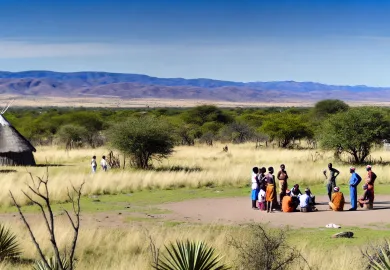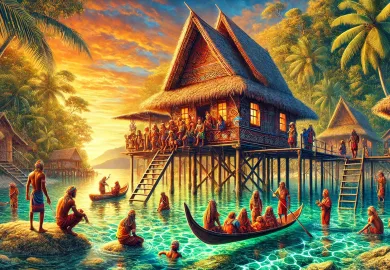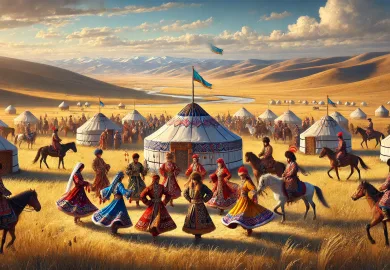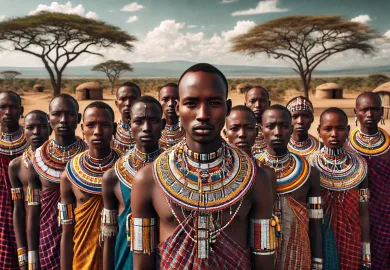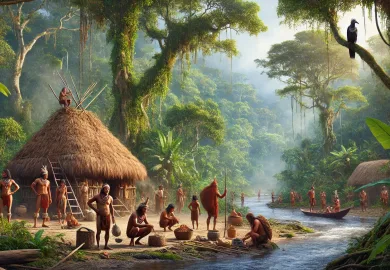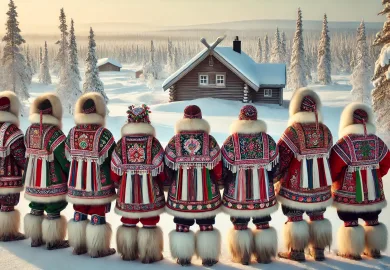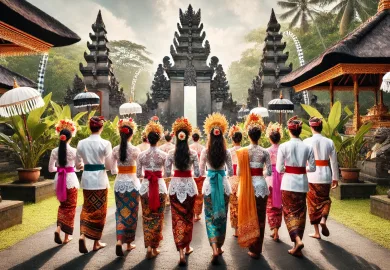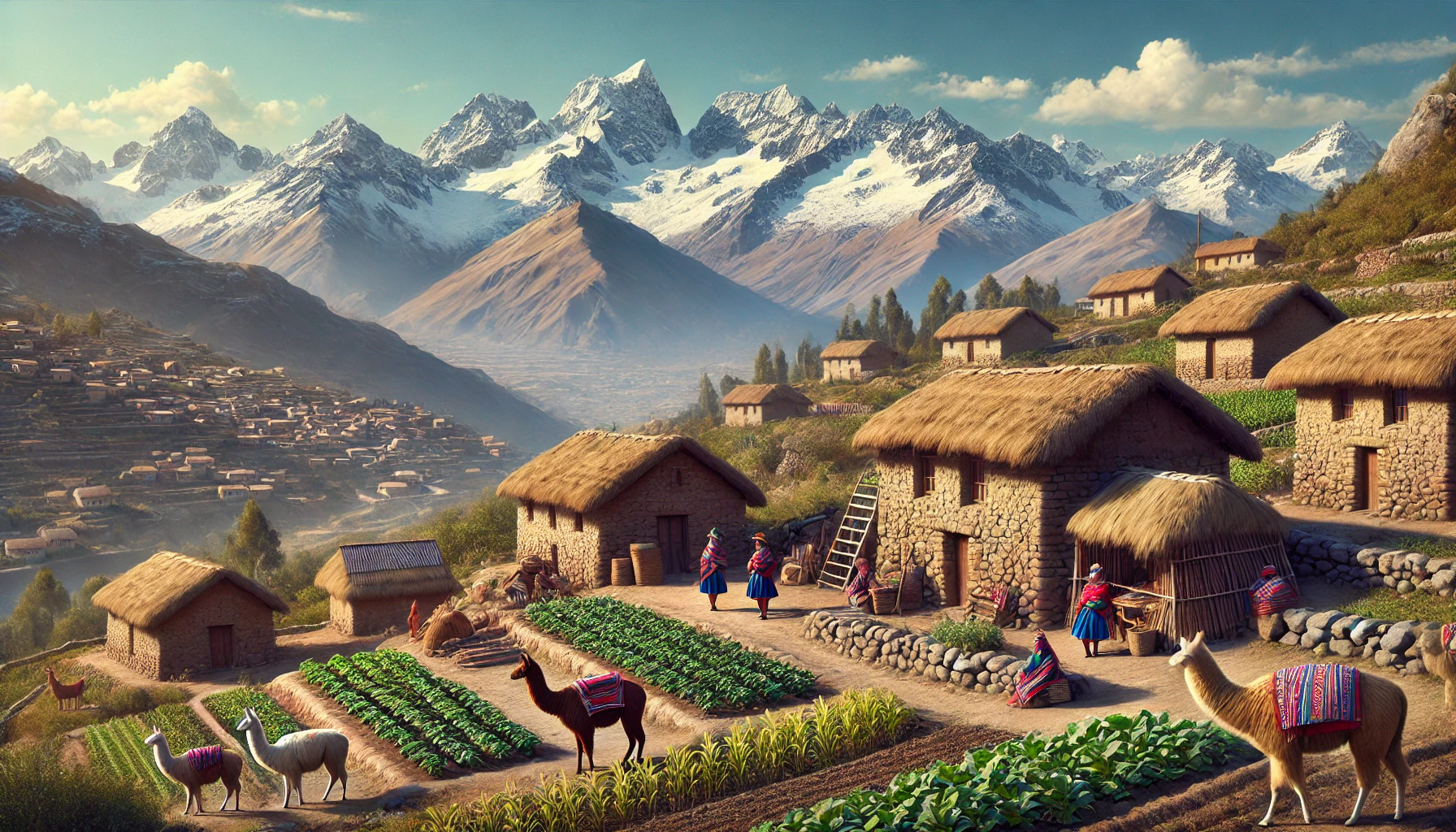
The Quechua people, descendants of the Inca Empire, have preserved their rich cultural heritage for centuries. Residing primarily in the Andean regions of South America, the Quechua have maintained their language, traditions, and way of life despite centuries of colonization and globalization. This article delves into the vibrant culture of the Quechua people, highlighting their history, language, customs, and connection to the land.
A Glimpse into Quechua History
The Quechua people are the direct descendants of the Incas, the most powerful and advanced civilization in pre-Columbian South America. The Inca Empire, which peaked in the 15th century, stretched across modern-day Peru, Ecuador, Bolivia, Argentina, Chile, and Colombia. The empire was known for its advanced agricultural techniques, sophisticated architecture, and intricate societal structures.
Following the Spanish conquest in the 16th century, the Inca Empire fell, but the Quechua people persisted. They adapted to the changes brought by colonization while striving to preserve their cultural identity. Despite the suppression of their language and traditions by the Spanish, the Quechua people continued to practice their customs in rural communities, often in isolation from the colonial powers.
Today, the Quechua people are one of the largest indigenous groups in South America, with millions of speakers of the Quechua language spread across several countries. Their resilience in maintaining their cultural identity is a testament to their deep connection to their heritage and their land.
The Quechua Language: A Living Tradition
Quechua is more than just a language; it is a living testament to the resilience and adaptability of the Quechua people. With over 8 million speakers across South America, Quechua is the most widely spoken indigenous language in the Americas. The language has several dialects, which vary by region, but all share a common root in the language of the Inca Empire.
The survival of Quechua is a remarkable achievement, especially considering the efforts by colonial and modern governments to suppress indigenous languages in favor of Spanish or Portuguese. Today, Quechua is recognized as an official language in Peru and Bolivia, alongside Spanish, and there are ongoing efforts to promote its use in education and public life.
In Quechua culture, language is closely tied to identity. The words used in Quechua often carry meanings that reflect the community’s deep relationship with nature, spirituality, and social organization. For example, the word “ayllu” refers to a traditional community or extended family group, which is a cornerstone of Quechua social structure. The preservation of such concepts through language helps maintain the Quechua worldview and cultural continuity.
Despite the challenges posed by modernization and migration, efforts to revitalize and promote the Quechua language continue. In recent years, there has been a growing interest in learning and teaching Quechua, not just among indigenous communities but also among non-indigenous people who recognize the importance of preserving this cultural heritage.
Quechua Customs and Traditions: A Rich Cultural Tapestry
The customs and traditions of the Quechua people are deeply rooted in their connection to the land and their ancestors. These customs have been passed down through generations, often orally, and continue to play a vital role in the daily lives of the Quechua people.
Weaving and Textiles: A Symbol of Identity
One of the most distinctive aspects of Quechua culture is their intricate weaving and textile production. Quechua weavers are renowned for their skill and creativity, producing textiles that are not only beautiful but also imbued with cultural significance. Traditional Quechua textiles are often made from wool or alpaca fibers, dyed using natural plant and mineral dyes, and woven using techniques that have been passed down for centuries.
The patterns and symbols found in Quechua textiles are rich in meaning. They often depict elements of nature, such as mountains, rivers, and animals, as well as geometric patterns that represent spiritual beliefs or social status. Wearing traditional clothing, such as ponchos, shawls, and hats, is a way for the Quechua people to express their identity and maintain a connection to their heritage.
In addition to their aesthetic value, textiles play a crucial role in Quechua society. They are used in rituals, given as gifts, and serve as a form of communication. The art of weaving is often taught from a young age, with both men and women participating in the creation of textiles, ensuring that this important tradition continues.
Festivals and Rituals: Celebrating Life and the Land
The Quechua people have a rich calendar of festivals and rituals that celebrate various aspects of life, nature, and spirituality. These events are deeply rooted in Andean cosmology and often involve offerings to Pachamama (Mother Earth) and the Apus (mountain spirits).
One of the most important festivals in Quechua culture is Inti Raymi, the Festival of the Sun, which dates back to the Inca Empire. Celebrated on the winter solstice in June, Inti Raymi honors Inti, the Sun God, who was considered the most important deity in the Inca pantheon. The festival involves elaborate ceremonies, traditional music, dancing, and offerings to the Sun, and it draws thousands of participants and spectators each year, particularly in Cusco, Peru.
Another significant tradition is the Pachamama Raymi, a celebration dedicated to Pachamama. This ritual, held in August, involves offerings of food, coca leaves, and chicha (a traditional corn beer) to the earth, asking for blessings and protection for the coming year. The Quechua people believe that maintaining a harmonious relationship with Pachamama is essential for ensuring agricultural fertility and overall well-being.
Quechua festivals and rituals are more than just celebrations; they are a way of reinforcing community bonds and expressing gratitude for the land that sustains them. These events are a vibrant reminder of the Quechua people’s deep spiritual connection to the natural world.
Traditional Medicine: Healing with Nature’s Wisdom
Traditional medicine plays a vital role in Quechua culture, reflecting the people’s profound understanding of the natural environment and its healing properties. Quechua healers, known as “paqos” or “curanderos,” are highly respected members of their communities, serving as spiritual guides, herbalists, and healers.
Quechua traditional medicine is based on a holistic approach that considers the physical, emotional, and spiritual aspects of health. The use of medicinal plants, many of which are native to the Andean region, is central to this practice. For example, coca leaves, which have been used for centuries by the Quechua people, are believed to have numerous healing properties, including relief from altitude sickness, digestive issues, and fatigue.
Rituals and ceremonies often accompany the use of traditional medicine, emphasizing the importance of spiritual healing. The “despacho” ceremony, for example, is a ritual offering to Pachamama that seeks to restore balance and harmony in an individual’s life. This ceremony is often performed by a healer to help patients overcome illness or misfortune.
Despite the availability of modern medical services, many Quechua people continue to rely on traditional medicine, either as a primary form of healthcare or in conjunction with Western medicine. The preservation and transmission of this ancient knowledge are crucial for maintaining the Quechua cultural heritage and ensuring the health and well-being of future generations.
The Quechua Connection to the Land: Agriculture and Sustainability
The Quechua people’s connection to the land is a fundamental aspect of their culture, influencing their agricultural practices, spiritual beliefs, and daily lives. For centuries, the Quechua have developed sustainable farming techniques that allow them to thrive in the challenging environment of the Andes.
Traditional Agriculture: A Harmonious Relationship with Nature
Agriculture is the backbone of Quechua society, and the people have developed innovative techniques to cultivate crops in the harsh Andean terrain. One of the most significant agricultural contributions of the Quechua people is the development of “terracing,” a method of creating stepped fields on the mountainsides. This technique not only maximizes arable land but also helps prevent soil erosion and retain water, making it possible to grow crops in otherwise inhospitable conditions.
The Quechua people have a deep understanding of their environment, selecting crops that are well-suited to the varying altitudes and climates of the Andes. Potatoes, maize, quinoa, and a variety of tubers are among the staple crops grown by the Quechua, many of which were first domesticated by their Inca ancestors.
In Quechua culture, farming is not just an economic activity but a spiritual one as well. The agricultural calendar is closely tied to the natural cycles of the earth, with planting and harvesting often accompanied by rituals and offerings to Pachamama and the Apus. This symbiotic relationship with nature ensures that the land remains fertile and productive for future generations.
Food and Cuisine: A Taste of Tradition
Quechua cuisine is a reflection of the people’s connection to the land and their resourcefulness in utilizing the natural ingredients available to them. Traditional Quechua dishes are hearty and nutritious, often featuring ingredients like potatoes, maize, quinoa, and various legumes.
One of the most iconic Quechua dishes is “pachamanca,” a traditional Andean meal prepared by cooking meat, potatoes, and vegetables in an earth oven. The food is placed on hot stones in a pit, covered with leaves and earth, and left to cook slowly. Pachamanca is often prepared for special occasions and communal gatherings, reflecting the Quechua values of community and shared resources.
Another staple of Quechua cuisine is “chuño,” a freeze-dried potato product that can be stored for long periods and used in a variety of dishes. Chuño is made by leaving potatoes out in the cold Andean nights to freeze, then allowing them to thaw and dry in the sun. This process, which dates back to the Inca Empire, allows the Quechua people to preserve their harvest and ensure a stable food supply throughout the year.
Quechua cuisine is not just about sustenance; it is also a way of preserving cultural identity. Many traditional dishes and cooking methods have been passed down through generations, serving as a connection to the past and a reminder of the Quechua people’s ingenuity and resilience.
Modern Challenges and Resilience: The Future of Quechua Culture
While the Quechua people have shown remarkable resilience in preserving their culture, they face numerous challenges in the modern world. Globalization, migration, and climate change are all impacting traditional Quechua ways of life, threatening their cultural heritage.
Urbanization and migration to cities have led to a decline in the use of the Quechua language, particularly among younger generations. As more Quechua people move to urban areas in search of economic opportunities, they often face pressure to assimilate into mainstream society, which can lead to the erosion of traditional customs and practices.
Climate change is another significant threat to the Quechua way of life. The Andean region is highly vulnerable to the impacts of climate change, including melting glaciers, changing weather patterns, and increasing temperatures. These changes are affecting the availability of water, the fertility of the soil, and the health of livestock, all of which are critical to Quechua agriculture and livelihoods.
Despite these challenges, the Quechua people continue to adapt and find ways to preserve their culture. There are ongoing efforts to revitalize the Quechua language, including bilingual education programs and cultural initiatives that promote the use of Quechua in public life. Additionally, many Quechua communities are exploring sustainable agricultural practices that can help mitigate the impacts of climate change and protect their way of life.
The resilience of the Quechua people is a testament to their enduring connection to their culture and their land. As they navigate the challenges of the modern world, the Quechua people continue to draw strength from their rich heritage, ensuring that their cultural legacy will endure for generations to come.

